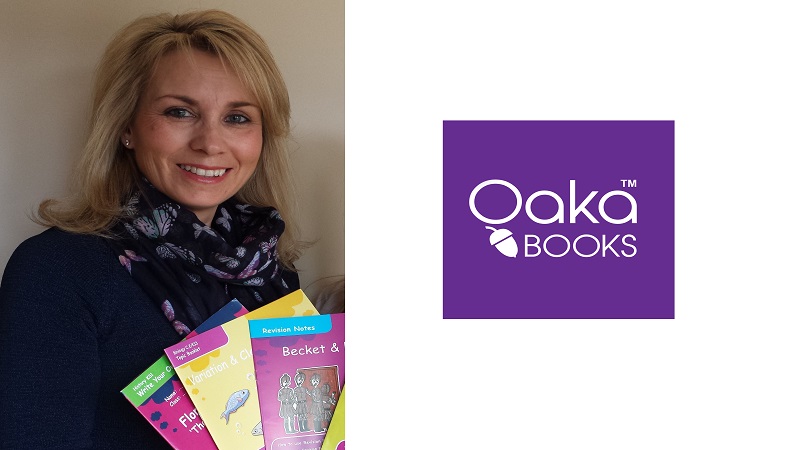To say that every child is different is a hackneyed expression; we all know that each child has their own unique strengths and weaknesses, likes and dislikes, quirks and characters. This can be seen no more clearly than in the classroom, when thirty-odd children from varied family and social backgrounds are brought together for six hours a day, five days a week, to undergo their educational journey together. But by and large, they’re all taught in the same way; an educational structure exists for children to fit into, rather than the other way around. And the sad fact is that those children who are most able to bend to the will of that structure are the most likely to succeed. All too often, those who think a little differently or learn in more abstract or exploratory ways are discouraged and disenfranchised – sometimes putting them off learning altogether. But many of us will have memories of a teacher who really had an impact on us and generally it will be because they did something different in the classroom that turned the ordinary into the extraordinary.
But what are teachers to do? They can’t tailor the curriculum to the individual needs and preferences of each student, but they know that a ‘one-size-fits-all’ approach to learning just won’t cut it. The key to enabling all students to learn in a way that works for them is to have options, and that means the resources to support those options. In the same way that no two children will have exactly the same taste in music, food or fashion, no two children will have identical ways of learning that suit them best – but these preferences can be grouped into categories. Teachers need to have resources available to them to support each different learning style; schools need a creative use of budgets to avoid teachers spending hours creating their own resources.
Just as some children will love music and others prefer playing football, some learn best when they’re encouraged to move about and explore, others will absorb information best when presented with images, colour and graphs, while others still prefer written exercises and silent working. In other words, every class will be made up of an eclectic mix of visual, auditory, reading and writing, and kinaesthetic learners. Teachers need to make sure that their lessons cater for each type of learner, as well as for those with special educational needs or dyslexia, so that every student has an equal opportunity of navigating their way through the tremendous amount of information our youngsters are expected to absorb and retain.
Weaving the curriculum into real-life situations encourages students to engage with the syllabus in different ways; often ways that they can personally relate to. Visual learners will comprehend complex concepts by depicting them in pictorial ways, such as through colourful imagery, shapes, graphs and tables. Encouraging the natural inquisitiveness and playfulness of kinaesthetic learners can be achieved by getting them out of their seats, building and deconstructing things, experimenting with different materials and undertaking hands-on educational activities. Auditory learners may love the chance to create their own audio books and presentations. Even if we cannot manage to physically create this environment in the classroom, 3D images and animations open up a whole new world for students who like to learn by ‘doing’, ‘touching’ or ‘feeling’. Something as simple as playing a relevant board game can to engage with a classroom and get them interacting with one another.
Not only will this method of teaching mean that the curriculum is delivered in a way that provides something different for all types of learners; it will also expose students to new ways of interacting with their studies – potentially opening their eyes to mediums of studying that they find more fun and effective. So, rather than trying to make a visual learner respond to a lecture-style lesson – like trying to force a square peg into a round hole – taking a flexible and playful approach to teaching and bring a variety of learning techniques to the classroom can have a hugely positive impact on students’ reaction. Children who’ve been struggling to grasp a concept for ages can suddenly have a ‘lightbulb moment’ when they’re encouraged to look at it from another direction.
Differentiation in the classroom can be a great opportunity to think outside the box and change our routine way of working, but teachers need the tools and resources to do this effectively. Creating a classroom of ‘round pegs in round holes’, in terms of teaching styles, will not only allow students to learn more productively, but the teacher’s role will also prove to be so much easier.
About Oaka Books
Oaka Books is the only UK publisher specialising in curriculum based resources for SEN pupils, including dyslexic and visual learners. The resources include a range of over 50 Oaka topic packs covering Common Entrance and KS1, KS2 and KS3 across history, science, maths and geography, with more subjects available soon. The aim of the packs – which have been written by subject-specific and SEN teachers – is to support and engage SEN pupils and visual learners, helping them to retain focus and interest through effective visual revision resources that reinforce the learning experience.
The learning and revision guides have been produced following guidelines from the British Dyslexia Association and many are endorsed by the ISEB (Independent Schools Examinations Board). Oaka topic packs are supplied in over 350 schools in the UK and abroad and were shortlisted as ERA Secondary Resource of the Year in 2015.
For more information, visit: www.oakabooks.co.uk
Bambi supported her dyslexic daughter through her Common Entrance and GCSE exams. The ‘kitchen table development’ of dyslexia-friendly revision resources and subsequent overwhelming improvement in her daughter’s grades resulted in Bambi’s departure from her marketing day job to work with a team of teachers on the creation of Oaka Books. The company now publishes over 50 topic packs for dyslexic children and visual learners.






Leave a Reply